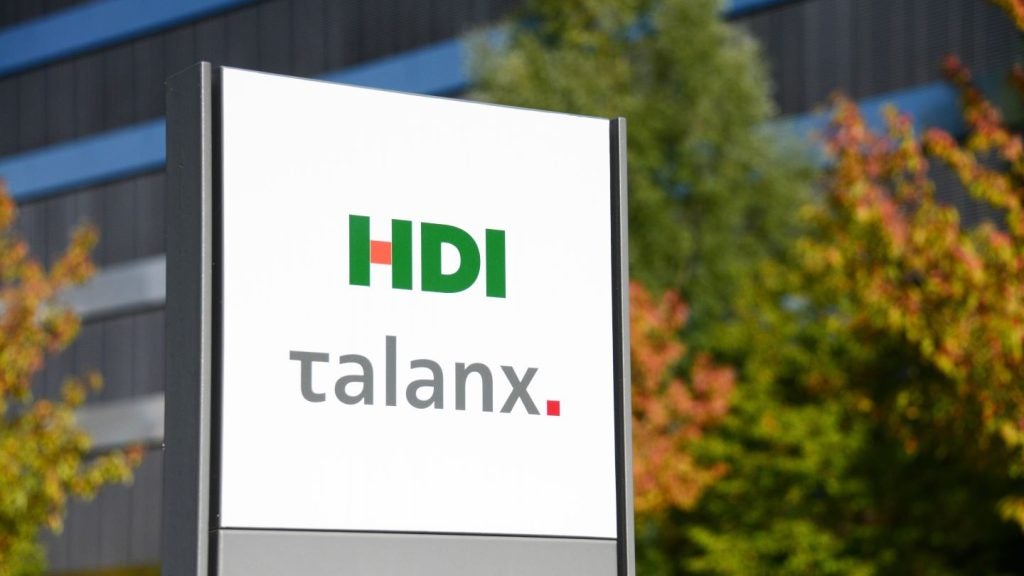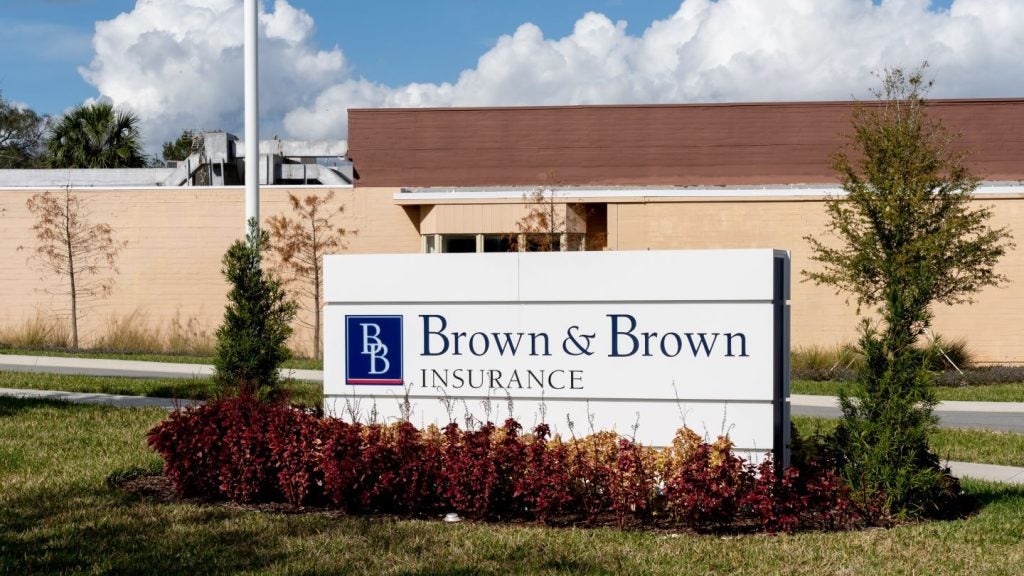With a combination of
extremely high GDPs per capita and exceptionally low insurance
penetration, the six Arab countries that form the Gulf Cooperation
Council represent a market with huge potential. But there are big
challenges to overcome, not least of which is the market’s highly
fragmented structure.
 Formed in 1981, the Cooperation Council for the Arab States
Formed in 1981, the Cooperation Council for the Arab States
of the Gulf – or the Gulf Cooperation Council (GCC) as it is more
commonly known – represents a grouping of some of the world’s
wealthiest countries. It also represents one of the world’s most
underdeveloped, high-potential insurance markets.
The GCC is a political and economic
union of six Arab states in the oil-rich Persian Gulf region,
namely Bahrain, Kuwait, Oman, Qatar, Saudi Arabia, and United Arab
Emirates (UAE).
The GCC could soon increase to
seven or eight states. Morocco has been invited to join the GCC and
a request by Jordan is being considered.
As a region, the GCC has a very
substantial combined GDP which, driven by the sharp rise in the oil
price, is anticipated to grow from $1.1trn in 2010 to $1.4trn in
2011, according to Global Investment House (GIH), a Kuwait-based
asset management company.
This significant 27% increase in
nominal GDP would follow an increase of 17.8% in nominal GDP
recorded in 2010. Excluding oil, GIH predicts that real GDP growth
in 2011 will come in at 5.3%.
GIH’s prediction of GDP in 2011 is
in line with a forecast made in August this year by UAE-based
investment bank Alpen Capital Group.
Looking further ahead, Alpen
Capital forecasts that real GDP in the GCC region will grow at a
CAGR of 5.6% between 2011 and 2015. In constant money terms this
would represent an increase of $339bn between 2011 and 2015. Alpen
Capital is an associate of Bank Sarasin-Alpen, a subsidiary of
Swiss private bank, Bank Sarasin & Co.

Small
population
Contrasting with the GCC’s
significant GDP is the region’s relatively small population which
stood at some 45m at the end of 2010. Saudi Arabia accounted for
about two thirds of the total.
Notably, in a study by the
Economist Intelligence Unit (EIU) undertaken for the Qatar
Financial Centre Authority the research firm estimated that
expatriates made up 42% of the GCC region’s population in 2009. The
GCC’s population has two other notable features: its age profile
and rapid growth.
On the age profile of the GCC’s
population, the EIU noted that most of the region’s inhabitants are
under 25 and that a bulge in the population of under-15s suggests
that this will still be the case by 2020.
On population growth, the EIU
predicted that the GCC’s population will reach 47.5m by 2015 and
53.4m by 2020. However, the EIU noted that a precise estimate is
made difficult by the significant uncertainty surrounding the
future trend in migrant workers who are primarily employed in the
construction industry.
According to Alpen Capital, the
proportion of expatriates in the GCC range from around 30% in Saudi
Arabia to 85% in UAE. The EIU’s projection assumed no change in the
number of expatriate workers. The World Bank forecasts that the
GCC’s total population will reach 45.6m in 2015, 1.9m less than the
EIU forecast.
The GCC’s high GDP and the
relatively small populations of most of its members have created
some of the world’s wealthiest countries.
Indeed, Qatar, with a GDP per
capita of $90,950 in 2009, is ranked as the world’s wealthiest
country, according to the World Bank. Of the other GCC countries,
UAE is ranked 3rd, Kuwait 7th, Bahrain 21st, Oman 36th and Saudi
Arabia 41st.

Underdeveloped insurance
market
Despite the GCC region’s
significant wealth, its insurance market is still significantly
underdeveloped.
Across general and life insurance
total premium income of $14.648bn was generated in 2010 which
represented a penetration rate of only 1.3% of GDP. This compares
to the global average of 6.9% and an average of 3% in emerging
markets.
The insurance density (premiums per
capita) in the GCC region is also low, averaging $360.8 in 2010,
according to Alpen Capital.
UAE lead the region with a density
of $1,360 while the lowest density was in Saudi Arabia at
$178.40.
On the low penetration of insurance
in the GCC, Alpen Capital observed: “Given the high correlation of
penetration levels with GDP, the low regional penetration and
density underscore the significant growth potential of the rapidly
growing economies in GCC.”
To an extent, the growth potential
of the region’s insurance market has already been demonstrated.
Between 2006 and 2010 premium income more than doubled, from
$6.253bn to $14.648bn to record a CAGR of 23.7%.
Within the total picture general
insurance maintained its dominance, recording a CAGR of 23.8%
between 2006 and 2010 which lifted the sector’s premium income from
$5.47bn to $12.85bn.
Growth in the life sector was
marginally slower, with a CAGR of 23.2% recorded. This lifted life
premium income from $783m in 2006 to $1.8bn in 2010, or an average
of $44.10 per capita.
As a consequence, the balance
between general insurance premium income and life insurance premium
income remained significantly out of line with global norms.
Specifically, while life premiums accounted for only 12.3% of total
premiums in the GEC in 2010, the global average was just over 58%,
according to Swiss Re.
Alpen attributes part of the reason
for the low penetration of life insurance to the fact that the GCC
is governed by Islamic laws. In a projection of growth in insurance
premium incomes up until 2015, Alpen Capital anticipates that the
balance between general and life premiums will move somewhat in
favour of the life sector.
In the general insurance sector
Alpen forecasts that premium income will reflect a CAGR of 19.7%,
boosting premium income between 2010 and 2015 by $18.7bn to
$31.52bn.
In the life insurance sector the
investment bank forecasts that a CAGR of 23.5% will be achieved
boosting premium income over the five years by $3.38bn to $5.18bn
in 2015. If the forecast proves accurate, life premium income will
make up 14% of total premium income in 2015.
Consulting firm AT Kearney is also
positive on prospects for life insurance in the GCC.
“As citizens become more aware of
the benefits of [life] insurance, the cultural barriers that
hampered development are diminishing,” the firm noted in a recent
report on the GCC insurance industry.
Supporting this view, the EIU noted
in its study: “The large size of the young population, and its
growing access to education, the international media and new
technologies, suggests that social attitudes and norms will change
fast.”
The EIU added: “Many [young adults]
will be affluent and well-travelled, and many will be educated
overseas, giving them a high awareness of different lifestyles and
cultures.”

Takaful
In an Islamic region a key solution
in the life sector is Islamic Sharia-law compliant family
takaful insurance.
Globally professional services firm
Ernst & Young (E&Y) believes the foundations of
takaful have only just been laid and that substantial
growth lies ahead for the sector.
Speaking at a conference in July,
E&Y head of Islamic financial services in the Middle East and
North Africa (MENA) region Ashar Nazim told delegates that, while
Muslims make up 20% of the global population, the takaful
market is only 1% of the global insurance market.
“Muslim countries are expected to
increase the adoption of takaful and related instruments
in the coming years,” said Ashar.
“We expect takaful to be
the default choice for Islamic countries in the future.”
According to Ashar, global
takaful premiums stood at $9.15bn in 2010, up 31% compared
with 2009. He anticipates growth will maintain this pace in 2011,
boosting premium income to about $12bn.
Ashar added that this growth rate
is likely to be sustained putting potential global takaful
premium income at about $25bn in 2015.
Significantly, Ashar believes that
it will be family takaful that will become the long-term
leader in the takaful market. He pointed out that in the
MENA region family takaful contributes only some 5% of total
takaful premium income while in Malaysia it contributes
about 77%.
In 2010, family takaful
premium income stood at $115.8m in Malaysia and $63.5m in the
GCC.
“There is a tremendous amount of
catching up to Malaysia that we could see happen in the future,”
Ashar said.
However, in the GCC, E&Y has
also stressed that very specific problems need to be resolved.
In a report on the global
takaful market published in April, E&Y noted:
“Critical mass has not been achieved and effective distribution
remains a challenge.”
A major reason for this and
aggressive pricing in the market observed E&Y, has been the
proliferation of companies entering the GCC family takaful
sector – a total of about 30 in 2008 and 2009 alone.
E&Y noted that regulatory
authorities across the GCC have indicated there would be no further
licences issued until market conditions stabilise.

Fragmented
market
Fragmentation is not unique to the
GCC’s takaful sector. It exists across the region’s entire
insurance market. According to Alpen Capital, there are now about
180 domestic and foreign players. Most foreign insurers have
focused exclusively on the life segment, noted Alpen.
The investment bank also
highlighted that the high number of insurance companies has
exacerbated the lack of expertise in underwriting and portfolio
management skills in the GCC and has also created a high dependence
on reinsurers.
Alpen Capital added that the
over-crowded nature of the market has taken a toll on the
profitability of GCC insurance companies.
The highest number of insurers, 57,
is in the GCC’s biggest insurance market, UAE, where the top three
insurers account for a combined market share of only 21%. The three
are: Oman Insurance, Abu Dhabi National Insurance and Arab Orient
Insurance. The most prominent foreign insurers in UAE are Friends
Provident, Zurich, RSA and American Home.
Higher fragmentation is evident in
some smaller GCC insurance markets. In Oman, for example, there are
23 insurers in a market which recorded total premium income of
$785m in 2010. The top-three players had a combined market share of
22%, according to Alpen.
Across the GCC insurance market the
largest insurer is Saudi Arabia-based Company for Cooperative
Insurance (CCI) which according to Alpen reported total revenue of
$1.15bn in 2010. CCI’s net profit was $129.3m and its return on
equity (ROE) an impressive 30.5%. The public owns about 54% of
CCI’s equity.
In 2010, general insurance
accounted for 41.2% of CCI’s revenue and health insurance
58.8%.
Driving CCI’s significant health
insurance revenue was the Saudi government’s decision in 2005 to
introduce compulsory health insurance for all expatriates.
Foreigners account for almost one in five of the country’s
population of some 27m. Second-largest insurer in terms of revenue
is Qatar Insurance Company (QIT) which provides general insurance,
reinsurance, real estate, and financial advisory services. In 2010,
QIT reported revenue of $591.3m, net profit of $162m and a ROE of
19.1%.
Next in line in terms of revenue is
a 64%-owned subsidiary of UAE-based Mashreqbank, Oman Insurance
Company (OIC). In 2010, OIC generated total revenue of $665.3m.
However, OIC’s net profit was modest at $25.6m as was its ROE of
6.3%. Of its revenue, 11% was generated by life insurance, 19% by
health insurance and the balance by general insurance.
Also significant in terms of size
in the context of the GCC market is UAE-based, takaful
specialist Islamic Arab Insurance Company (IAI) which, in 2010,
reported revenue of $531.6m and a net profit of $13.6m. Life
insurance accounted for 15.7% of revenue, health insurance 2% and
general insurance 82.3%. IAI is active in UAE, Tunisia, Saudi
Arabia, Algeria, Egypt, Jordan and Senegal.
Ranking fifth in terms of size
among GCC insurers is UAE-based Abu Dhabi National Insurance
Company (ADNI) which, in 2010, reported revenue of $481.9m, net
profit of $38.8 and a ROE of 7%. ADNI operates in the general
insurance and reinsurance sectors.
Sixth-largest of the insurers is
Kuwait-based Gulf Insurance Company (GIC) which produced revenue of
$424.7m and a net profit of $27.3m in 2010. General insurance
dominated at 73.1% of revenue followed by health insurance (15.2%)
and life insurance (11.7%). GIC’s operations are confined primarily
to Kuwait.
Also of reasonable size is
seventh-ranked Arab Orient Insurance Company (AOI). Headquartered
in Amman, Jordan AOI is active in UAE and Oman. In 2010 AOI
generated revenue of $307.2m and a net profit of $52.5m. Life
insurance accounted for 8.9% of revenue.
Ranking eighth, UAE-based Al
Buhaira National Insurance Company reported revenue of $177.1m in
2010 and net profit of $11.9m. Close on its heels in terms of
revenue was UAE-based Emirates Insurance Company which reported
revenue of $171.5m but a higher net profit of $29.4m.
Moving down the rankings of GCC
insurers, the far lower revenues of insurer’s highlight the
fragmented nature of the market.
For example, Oman National
Investment in 16th position generated revenue of $62.2m in 2010,
67% of which was from life insurance.
Against the background of the GCC’s
fragmented insurance market, Alpen Capital noted: “The local
markets are saturated with numerous players both large and
small.”
The investment bank continued that
it expects consolidation in the industry aimed at achieving
efficiency gains and economies of scale.
“Consolidation will also reduce predatory pricing and increase
profitability and will provide opportunities for other players to
enter the market through acquisitions,” Alpen Capital added.







